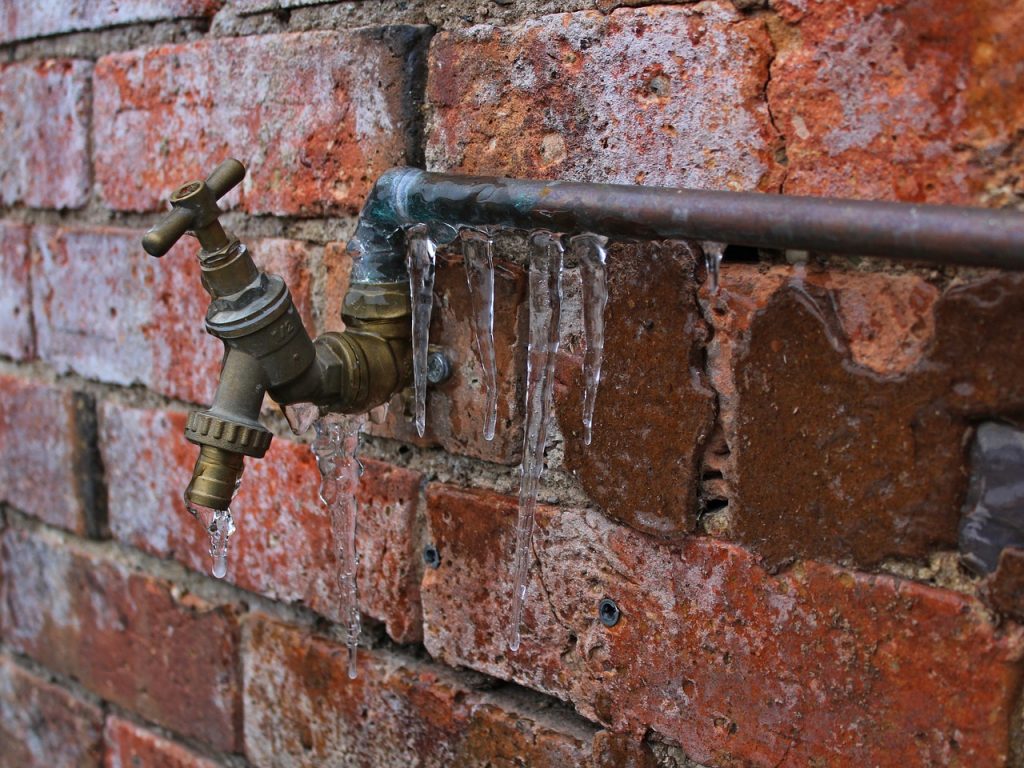When, How to Winterize Your Sprinkler System
BY JACKIE GREENE | OCTOBER 21ST, 2019 | COLD CLIMATE, HOME & GARDEN, HOME & GARDEN, LAWN CARE, TOOLS, APPS & ACCESSORIESYour grass likes a deep drink every week to 10 days in most climates. But the question of when to stop watering your lawn and winterize your sprinkler system is a little more complicated.
Most of the country will see at least one deep freeze during the cold season. Many more will see freezing temperatures and snow through the winter months. The answer to when to shut off your sprinkler system for the season depends on the length of your growing season and the part of the country where you live. Lawns in Texas will need water until they go dormant in November. In Colorado, sprinkler systems run the risk of freezing by the end of September. Some cities and counties also restrict when and how long you can water.
When the time does come, you will want to get your irrigation system ready for the harsh winter, so you won’t have any unpleasant, wet surprises.
5 Steps: How to Drain, Winterize Your Sprinkler System
- Find the manual drain valves located downstream of each zone valve.
- Turn off the water supply by closing the main valve in the sprinkler valve box.
- Open all the drain valves for each zone, and leave them open until all the remaining water drains from the pipes.
- Lift and drain all sprinkler heads, even if you have an automatic draining system.
- Close all the drain valves.
Alternative: The ‘Blow-Out’ Method
You can also use the blowout method. you’ll need an air compressor, a quick-connect air hose adaptor, and eye protection. Close the main supply valve and the valves around the backflow device. Uncap the blow-out port, connect the quick-connect hose adaptor and attach the compressor hose.
It’s important to have a pressure regulator and adjust to pressure to 40 psi if you have PVC pipes, and 50 psi if you have polyethylene pipes. Too much air pressure and the air will crack your pipes. You’ll want to blow out your sprinkler system zone by zone.
Remember to wear eye protection. This will protect you in case one of the sprinkler heads pops off during the blowout. You want the sprinkler heads to pop up and push out any water remaining in your water line.
If you’re not certain or intimidated by the idea of blowing out the sprinkler system yourself, you can hire a professional to do it. It should cost from $50 to $150, depending on how big your irrigation system is and where you are. If you plan to do it yourself, renting an air compressor can run you about $50, give or take a few bucks.
After the water is expelled, you can turn things off for the season by cutting off the water supply at the main shut-off valve. It’s typically a ball valve with a lever. The shutoff valve will keep water from the main water supply from entering your pipes during the winter months.
Keeping Faucets From Freezing

Outdoor faucets can freeze just as fast as sprinkler systems. Winterization is crucial if you don’t want to see burst pipes in early spring. Find the shut-off valve in your garage or basement and turn them off. Turn on all faucets to drain any water. Faucets in the southern half of the U.S. are often more vulnerable since Southern homes aren’t built for hard freezes. Since the pipes are often more exposed, one freeze can do a lot of damage. Consider buying faucet and pipe covers to insulate them during the winter — just in case.
When to Turn the Sprinklers Off, Protect the Faucets
If you walk outside in the morning and see frost, don’t confuse that with the killing freeze that ends the season. According to the National Weather Service, “Typically, frost can occur when the temperature falls below 36 degrees Fahrenheit, especially in rural areas. It is a localized phenomenon and can be quite variable across a small area. While the National Weather Service does not keep track of ‘frost’ in observations per se, we do keep track of when temperatures hit the freezing mark or fall below.”
Meteorologists define a hard freeze as occurring at 28 degrees Fahrenheit. That’s the start of the pipe-busting kind of freezing cold weather and the kind of cold that can kill plants. It can also take out a sprinkler valve or two.
It usually arrives in the first 10 days of September in the upper altitudes of the Rocky Mountains of Colorado. In Key West, Fla., you can expect the first freeze on the 10th of Never (there has never even been frost, let alone sleet or ice, in America’s southernmost city). Your local TV meteorologist will tell you in no uncertain terms that a hard freeze is in the forecast, and you need to protect your pipes, pets, plants.
Protecting your pipes and winterizing your lawn sprinkler system is crucial in parts of the country that see hard freezes during the winter months, and that includes most of the US. It’s easy to keep track of what areas have already had their first freezes, thanks to the Midwestern Regional Climate Center, which tracks first freezes as part of its Vegetation Impact Program. So bundle yourself and your pipes up!